Originally from the East African island of Madagascar, where it grows as an understory rain forest plant, Red-edge Dracaena (
Dracaena marginata), or the Madagascar dragon tree, is a popular houseplant, thanks to its low light and water needs and its relatively compact sculptural form. It features thin green leaves with subtle red stripes along the edges, and while it grows slowly, it can reach up to 15 feet. With proper care a Red-edge Dracaena can reward a patient owner with many years of dramatic greenery.
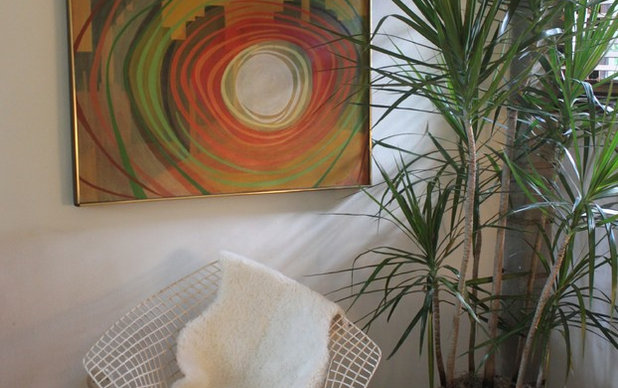
Madagascar dragon trees look best potted as a clump of three plants of different heights. Here a small pot was filled with what appears to be seven stalks, with fantastic results, so don't be afraid to go overboard.
When your dragon tree has reached a height that you don't want to exceed, repot every third year to refresh the potting soil, but use the same size pot or one only slightly larger to slow its growth. You can also control the height by simply cutting off the top. Two new stems will grow from the cut area within a few weeks, and you can produce a small new plant from your cutting.

Michael Abrams Limited
Dragon tree has minimal needs and nearly mess-free growth. It's the perfect plant for a bright corner spot, and as long as you don't allow it to get bone dry, and you keep it free of pests and dust, it should flourish.

S / Wiley Interior Photography
While it is sensitive to radical changes in light and temperature, and does not tolerate fluoride (found in tap water, perlite and some fertilizers), the tree is otherwise easy to care for. If the leaf tips become brown or any other discoloration appears (such as brown or gray spots, often caused by fluoride) address the problem right away. The problem may stem from too little or too much light or watering, or a need for more humidity, which can be provided by misting.
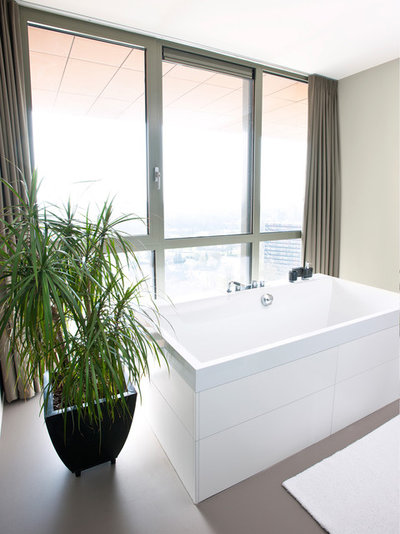
HUISSTYLING
If your plant comes from a bright nursery, don't place it immediately in a corner with only moderate light. Conversely, if your plant comes from someplace dark, acclimate it to a brighter location slowly by either regulating the light with curtains or moving it into its new spot over a few weeks.
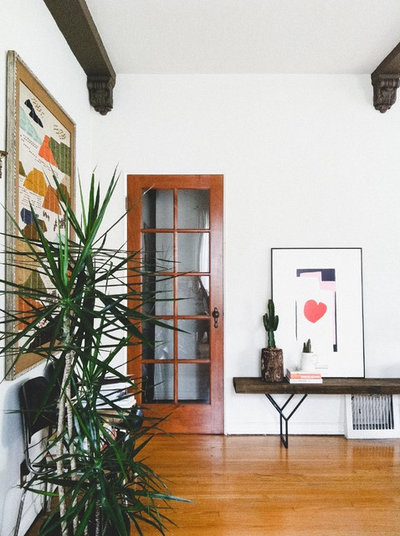
Dabito
Regularly dust the leaves with a soft, damp cloth, cleaning the undersides as well as the upper surfaces. Removing dust clears the plant's pores so that it can exchange air freely, and it helps prevent spider mites. Plus, a dusty plant won't be able to work its air purification magic.
Don't use commercial leaf-shine products on dracaenas.

ras-a, inc.
As the tree grows, it will lose its leaves at the bottom and take on a tall and lanky look. You can leave it as is or, to create a bushier plant, cut the tall canes down to the desired height with pruning shears.
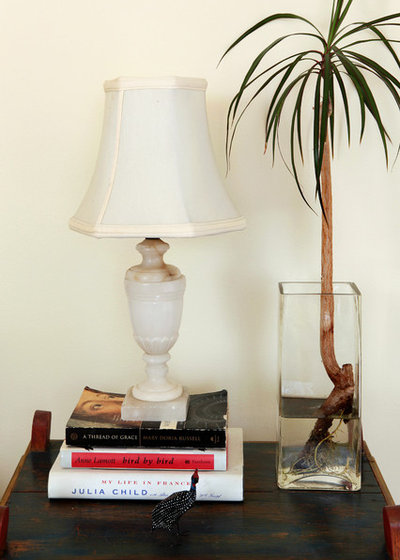
moment design + productions, llc
If you want to propagate your dragon tree or encourage it to branch, cut off a stalk in the spring or summer, dip it in rooting hormone and plant it, or simply root it in a vase of water. You should see root growth within a few weeks.
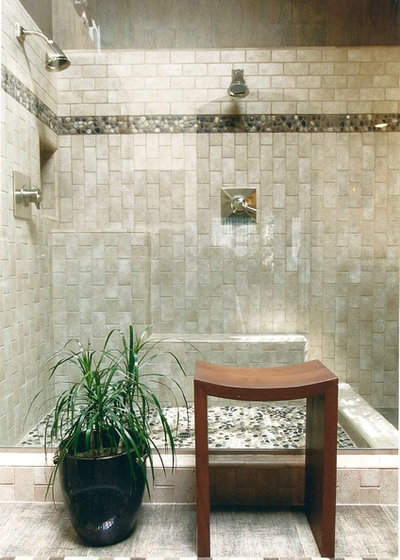
cathy Chilton
How to Care for a Madagascar Dragon TreeTemperature: Prefers
65 to 75 degrees Fahrenheit. Temperatures that drop below 60 degrees can cause the lower leaves to drop off. The plant will recover when the temperature is corrected or it becomes acclimated to the new environment.
Light: Place the plant in a location with bright to moderate indirect sunlight. Brown leaf tips and spots indicate that the plant is getting too much light. It is not getting enough light if the leaves turn pale and the variegation fades. Move it to brighter light gradually to avoid drooping leaves or those that drop off altogether.
Water: Dragon tree is relatively drought tolerant. Water it only when the soil feels slightly dry at a depth of 2 inches beneath the topsoil, and then water generously, using tepid water; the water should trickle through the drainage holes. Empty the drainage saucer an hour after watering. Never allow the pot to stand in water, because dragon trees don't like soggy soil. Too little water is better than too much, but don't allow the soil to become bone dry. Watering approximately once a week is adequate.
Yellow leaves are a sign of overwatering. The tree doesn't tolerate fluoride and reacts by developing yellow or brown scorched areas or brown leaf tips. With continual fluoride, the leaves will turn completely brown and die. Use bottled water to eliminate the problem of fluoride.
Humidity: Dragon tree benefits from a light misting several times per week when the air is dry, especially during the winter. Misting also helps to keep the foliage clean and free of dust.
Soil: Use well-draining, perlite-free soil; dragon tree does not tolerate the fluoride found in perlite.
Feeding: Fertilize the plant with a liquid houseplant fertilizer, mixed according to the package instructions, every two weeks in spring and summer. In fall and winter, feed monthly. Avoid fertilizers containing superphosphates, which often contain fluorine.
Air purification: Removes airborne gases released by xylene, trichloroethylene and formaldehyde, found in lacquers, varnishes and sealers. Formaldehyde is found in adhesives used in MDF and other pressed-wood or wood-particle products, as well as in cigarette smoke.
Pests: Dragon tree can contract leaf spot diseases, which occur during prolonged wet and warm weather. Avoid watering the plant from overhead to prevent these. If signs of leaf spot are detected, cut off the infected leaves immediately to prevent the disease from spreading. Thrips, mites and other chewing pests can often be controlled with horticultural oil or a thorough hosing down with strong jets of water. Pests are most likely to infest stressed plants, so keep your dracaena in good shape to avoid them.
Cautions: Dracaenas can be toxic to dogs and cats.
More great indoor plants





